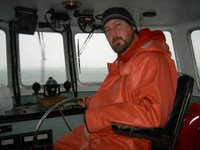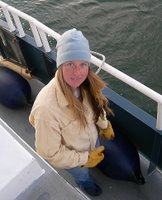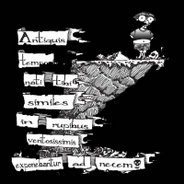A Native’s Guide to Boston, Part 2: The First Church of Christ, Scientist, by G. Adams

There are many secrets here, at the world headquarters-- things you'd enevr guess just by enjoying the reflecting pool and pefectly maintained grounds. Oh, you can visit the lobby, tour the cathedral, visit the map room where you can take a guided tour through a giant stained-glass model of the world, but no one will explain it all to you, what the globe is for, and if you ask even simple questions such as ‘Why was the 100-ton, eleven-foot granite pyramid that the Freemasons dedicated to church founder Mary Baker Eddy on her 100th birthday demolished?’ or ‘Is it true that the Church tried to assassinate Mark Twain for his highly critical, 1907 essays debunking Christian Science?’ or even ‘Is it true that Eddy was interred with a working telephone in her crypt, so that if (say ‘when’ instead of ‘if’ and maybe they’ll be nicer to you then they were to me) she rises from the dead, she can call to have her tomb unsealed?,' they’ll kick your ass out in a most unchristian manner.
Most of the grain is aligned north, but a good deal of it struck out in line with the largest lay line in the city (the one that runs down from the church in Mission Hill through to the Prudential tower, down just outside of Sonsie, that fancy bistro on Newbury Street, which explains the bad karma at that place, why so many of the help there has gone batty, but that's a story for another time), which makes it a proper cross, and crosses have meant something long before that Nazarene carpenter was spiked up to one, that's something a good many 'modern pagans' lose sight of.

See, there's a good deal more going on at the World Headquarters of The First Church of Christ, Scientist, than just another twist Catholicism, just like there's a lot more behind the Mormons than Osmonds (There was a lot more to Donny playing Joseph in ‘The Amazing Technicolor Dreamcoat’ a few years back, as well, and that should be evident in the fact that Andrew Lloyd Webber is a dyed-in-the-wool Scientologist. The only reason it's not "L. Ron Hubbard, Superstar", is because of the money thing), and you can see this if you look around: there are ten pillars along the south face of the main building, one for each arm of Kali, and the weather vane up top of the old church is --if you ever get a close look at it, you'd recognize this -- an ancient Freemason symbol. This, then, is where the pyramid meets the eye.
You need a look at the Church from the above --find a nice satellite photo, or get yourself up into the Hancock tower (the Pru's view is too skewed, and this is the REAL reason why they closed the observation deck on the Hancock tower) and look at the lay of the place, to see the truth of the design. But what's most evident, even from the ground, is the tall building, the skyscraper, is supposed to look like a bible, but is doesn't, it looks like something else, namely an enormous erect phallus, and you'd be right to say that this is an odd thing to build a church to resemble, but this isn't only about church, it's about power, it's about science. Hence the name.
If you could get into the basement, in the secret underground bunkers hidden beneath the reflecting pool, if you could see these football-field sized rooms full of mainframes, ouija boards, and stacks and stacks of back issues on the Christian Science Monitor, you’d know there's more going on here than simple worship. This is Mary Baker Eddy's dream, down here, and you should see it, while it lasts, because the marriage of Christ and Scientists is a wave that's about to break.
It's money, that's breaking the back of this fine tradition: seems that there's not as much as there used to be in either Christ or science, so of late, the World Headquarters has been somewhat strapped for cash. This poverty is evident in everything.
In these hidden underground rooms, where you can feel the rumble of traffic as it whistles past on the Massachusetts Turnpike, right above your head, the 100-year history of Ms. Baker’s faith is coming to a close. The floor tiles are that ugly, light-blue supermarket linoleum, with some white ones thrown in, to mix it up a little. Half of the lights are out, in this vast subterranean space, due to cost considerations. The place is cool in summer, positively cold in winter: you can see your breath as you navigate through the empty desks and wheezing machines. Many of the computer systems down here are antiquated, with floppy drives, or even reel-to-reel systems. The monitors all glow with that sickening green shade that dates them as circa 1986, and a good deal of the technology that is here, doesn't work, at least, it isn't turned on. The help isn't what is used to be, either.
There's a job crunch on in Boston, but people are stubborn, and won't work for just anybody, for anything, anymore, so the days when the First Church of Christ, Scientist could pick and choose are gone. The people you see down here these days, in their torn jeans, flannel shirts and ball caps, are all from MIT, or Northeastern, or even Berkeley, and they are simply filling time, paying no more attention to the charting and monitoring of the world's religious tendencies than they would to delivering pizza or waiting tables.
One of them sits, with his feet up on the console, beneath the Big Board, which is a Mercado Projection of the world, and demonstrates what part of what population believes what today. The monitor is old, and large parts of the world have fallen into an apathetic shade of blue.
The punk who is supposed to be watching the monitor is using the telephone. He knows that if the red line beeps, it means that Mary Baker Eddy is calling on the phone that she was buried with, and he knows to pick up, if that happens.
He doesn't, however, know who Mary Baker Eddy is.








